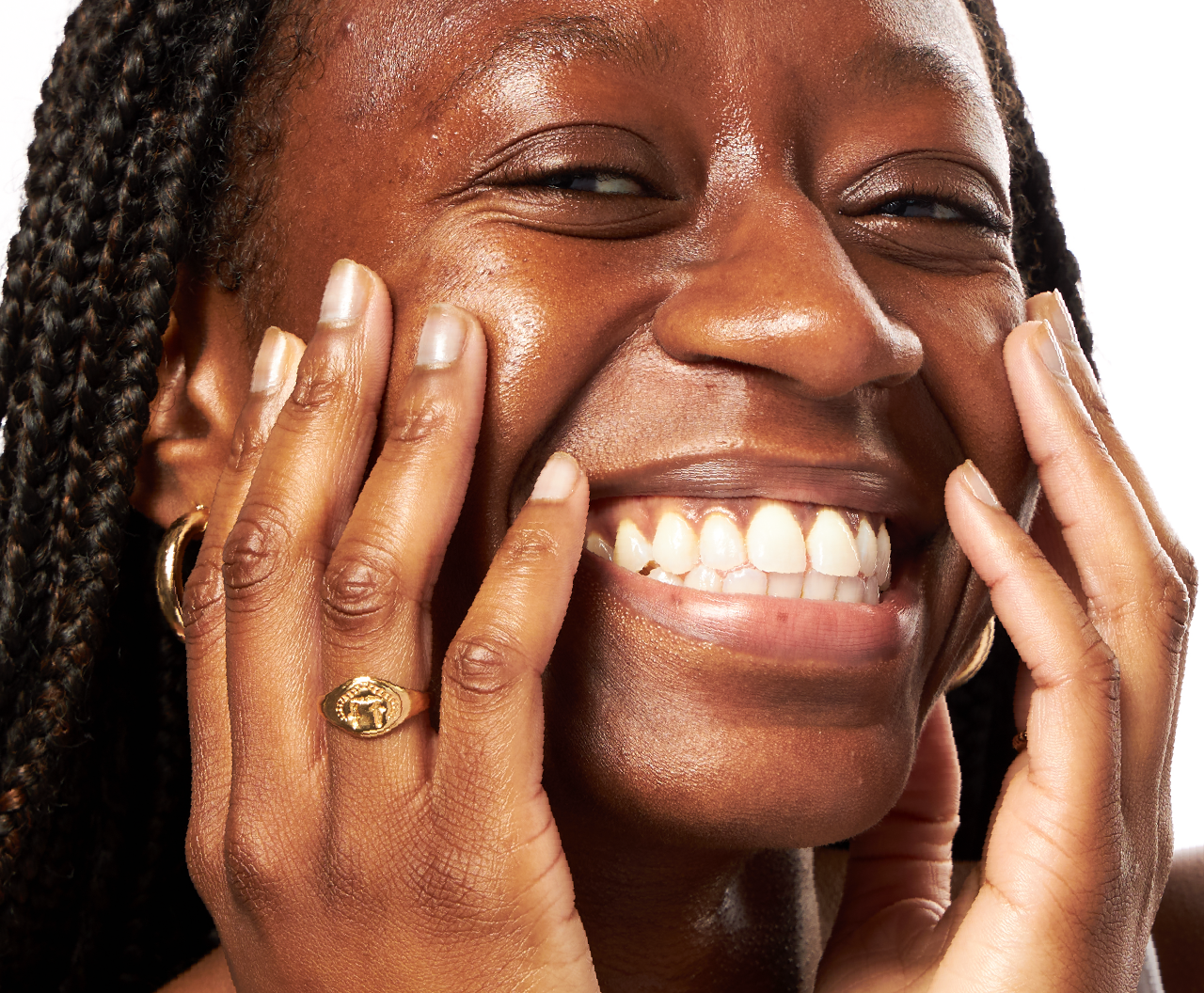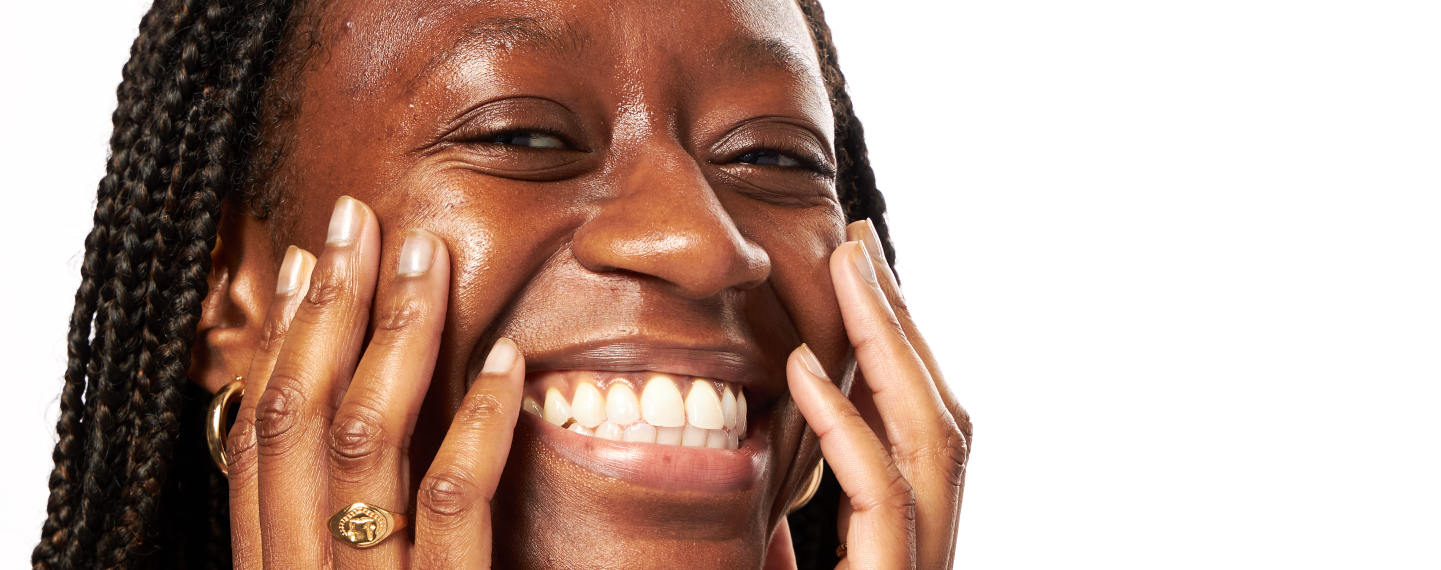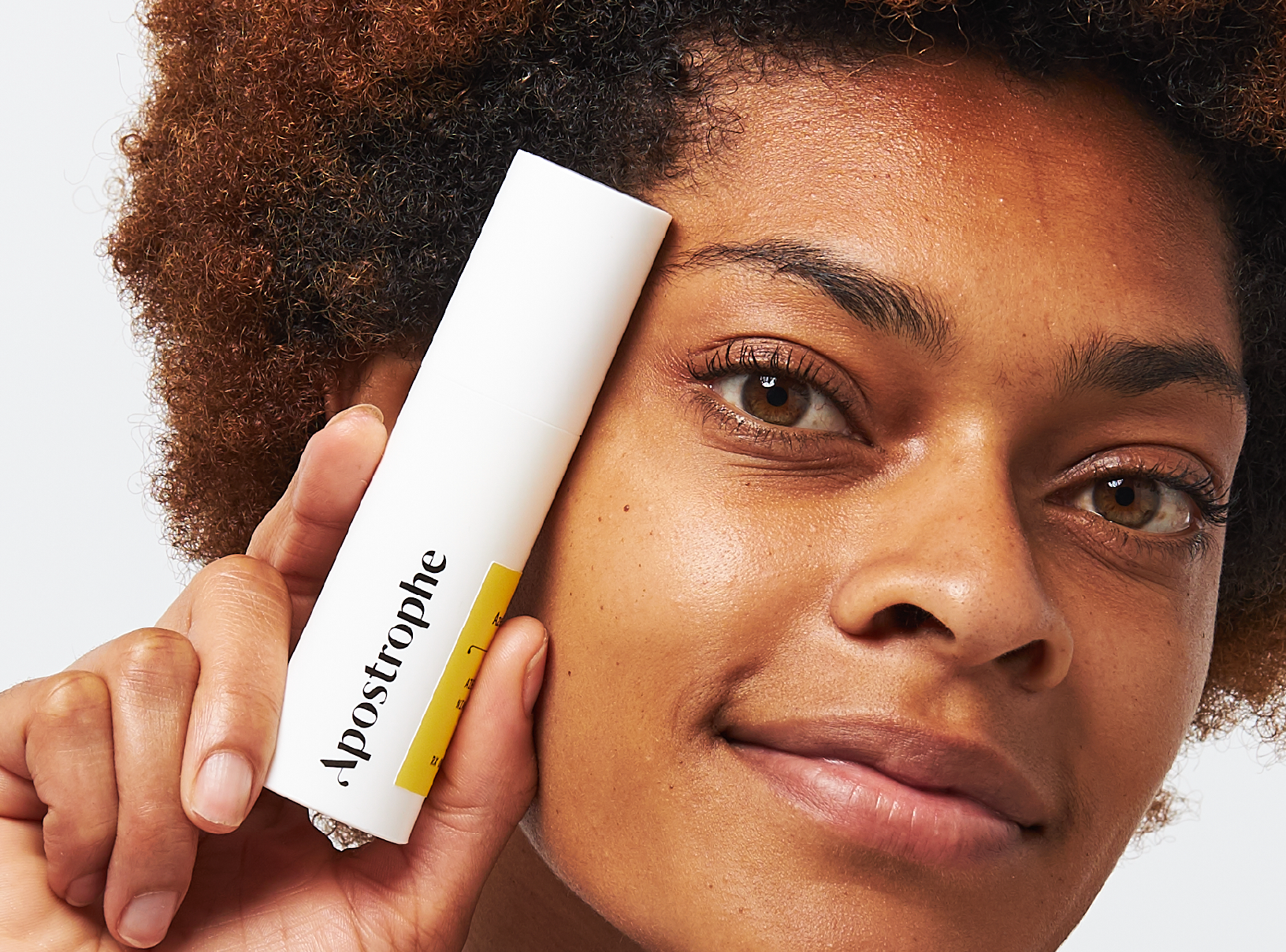Apostrophe Treatments
Niacinamide for acne: Does it work?


SHARE
Apostrophe Treatments
Niacinamide for acne: Does it work?
Medically reviewed by Katelyn Hagerty FNP
Written by Apostrophe Team
Last updated 4/1/2024
Acne is a problem that never seems to go away, on a personal or social level. Blemishes have been around forever, yet social media and other social factors have intensified our visibility when it comes to having less than perfect skin.
And just as acne is nothing new, so is the search for the right fix. Enter niacinamide — one of the latest acne fighters in the game.
Despite the clinical-sounding name, niacinamide is a naturally occurring B vitamin compound you’ve probably already consumed today.
Niacinamide is generally safe as an acne treatment, but it does come with some warnings. Here’s all you need to know about niacinamide and acne.
Niacinamide: The Basics
Niacinamide is a form of vitamin B3, alongside niacin. It is found naturally in many foods, including yeast, meat, fish, milk, eggs, beans, cereal grains, and green vegetables.
Niacinamide is primarily prescribed for treating deficiencies in B3 vitamins, along with related skin conditions such as pellagra.
The National Library of Medicine also lists other conditions that niacinamide is used to treat, with the slightly less optimistic “possibly effective for” notation.
These conditions include acne, diabetes, osteoarthritis, and certain cancers.
Niacinamide is required for the proper function of fats and sugars in the body—which are essential functions for cells and organs alike.
When taken orally in the recommended doses, niacinamide is considered mostly safe, though overdose may lead to liver problems or high blood sugar.
Likewise, as a topical ingredient, niacinamide can occasionally cause itching, burning, or redness.�
A typical adult shouldn’t take more than 35 mg of niacinamide per day.
Side effects may include itching and redness, and when taken orally it can cause an upset stomach, gas, and dizziness among other issues. Serious side effects include worsening of allergic reactions, increased gout or diabetes issues, and kidney and liver diseases.
Niacinamide and Acne
Acne is caused when your pores become clogged. It’s an imbalance between normally occurring materials, such as bacteria, oil, dead skin cells, and moisture.
When dead cells are too dry, they may have trouble sliding out of your pores. Your pores typically then produce more sebum (oil) to help the dead cells slide out.
Unfortunately, this can cause ideal conditions for bacteria to thrive, and in turn, acne.
This guide on the Types of Acne has more information, but in short, a way to fight acne is to help your skin return to balance, which is something niacinamide might do.
The mechanism for how niacinamide helps fight acne isn’t fully understood, yet there are some existing ideas on the benefits.
Niacinamide has shown some efficacy for treating skin issues like acne and aging in limited tests.
One clinical trial showed it was effective in reducing hyperpigmentation, red splotches, spots, fine lines and wrinkles.
Another study found that a topical gel utilizing 2 percent niacinamide slows the rate of sebum (oil) excretion, which can reduce oiliness and therefore reduce certain types of acne.
One study shows that a topical application can also raise skin moisture content by stabilizing the epidermal barrier—which would make niacinamide potentially valuable as a cosmetics ingredient.
Additional research shows that niacinamide can likewise increase permeability, which can help not just with moisture but with the reduction of scarring and wrinkles.
Most of these studies related to niacinamide and acne are 10 years old or more—and few have been effectively recreated or further explored.
The bottom line is that niacinamide holds a lot of potential both as an acne-fighting ingredient and as an anti-aging agent, but further study is needed before it’s touted as a miracle cure.
Other Ways to Treat Acne
Treating acne can sometimes involve more than just the latest ingredients. Cleansing your skin and living a balanced lifestyle may also help.
There are additional treatments, too, such as topical retinoids—especially for more severe acne.
Tretinoin, for example, is a prescription retinoid that will help unclog pores by stripping away dead cells and promoting the growth of new ones.

PRESCRIPTION TRETINOIN
Target acne, dark spots, and signs of aging with this science-backed ingredient.
You might also want to employ a moisturizer with hyaluronic acid in your skincare routine for acne.
Hyaluronic acid has been shown to help skin retain moisture levels many times its own mass.
Niacinamide, Acne, and What’s Next
Whether your acne is mild or serious, constant or periodic, one of the best things you can do is consult with a healthcare professional.
They can help you determine if a product containing niacinamide or other ingredients might be right for your skin.
You can also read more about the causes of acne and how to prevent breakouts. Arming yourself with information is another step toward clear skin.
References:
Rodan, K., Fields, K., Majewski, G., & Falla, T. (2016). Skincare Bootcamp: The Evolving Role of Skincare. Plastic and reconstructive surgery. Global open, 4(12 Suppl Anatomy and Safety in Cosmetic Medicine: Cosmetic Bootcamp), e1152. https://www.ncbi.nlm.nih.gov/pmc/articles/PMC5172479/.
Jegasothy, S. M., Zabolotniaia, V., & Bielfeldt, S. (2014). Efficacy of a New Topical Nano-hyaluronic Acid in Humans. The Journal of clinical and aesthetic dermatology, 7(3), 27–29. Retrieved from https://www.ncbi.nlm.nih.gov/pmc/articles/PMC3970829/.
Tanno, O., Ota, Y., Kitamura, N., Katsube, T., & Inoue, S. (2000). Nicotinamide increases biosynthesis of ceramides as well as other stratum corneum lipids to improve the epidermal permeability barrier. The British journal of dermatology, 143(3), 524–531. https://pubmed.ncbi.nlm.nih.gov/10971324/. |
Gehring, W. (2004), Nicotinic acid/niacinamide and the skin. Journal of Cosmetic Dermatology, 3: 88-93. https://onlinelibrary.wiley.com/doi/abs/10.1111/j.1473-2130.2004.00115.x.
Bissett, D. L., Oblong, J. E., & Berge, C. A. (2005). Niacinamide: A B vitamin that improves aging facial skin appearance. Dermatologic surgery : official publication for American Society for Dermatologic Surgery [et al.], 31(7 Pt 2), 860–865. https://doi.org/10.1111/j.1524-4725.2005.31732.
Zoe Diana Draelos, Akira Matsubara & Kenneth Smiles (2006) The effect of 2% niacinamide on facial sebum production, Journal of Cosmetic and Laser Therapy, 8:2, 96-101, https://www.tandfonline.com/action/showCitFormats?doi=10.1080%2F14764170600717704.
U.S. National Library of Medicine. (n.d.). Niacinamide: MedlinePlus Supplements. MedlinePlus. https://medlineplus.gov/druginfo/natural/1534.html.
Fox, L., Csongradi, C., Aucamp, M., du Plessis, J., & Gerber, M. (2016). Treatment Modalities for Acne. Molecules (Basel, Switzerland), 21(8), 1063. https://www.ncbi.nlm.nih.gov/pmc/articles/PMC6273829/.
Like what you just read? Sign up for our email list to get the scoop on skincare science delivered straight to your inbox.

Education
What is milia?
What is milia? Today, we’re jumping into one type of bump that you may have heard about most commonly in infants — milia.
Read More
Education
Best moisturizer for acne-prone skin
If you have combination acne-prone skin, figuring out which moisturizer is best for your skin might be tough. In this guide, we break down the best moisturizer for combination, acne-prone skin.
Read More
Education
How to build a face care routine
As you get into skincare, it might seem overwhelming, especially trying to figure out the order you're supposed to apply products in. Below, we detail how to build a face care routine for your skin!
Read More